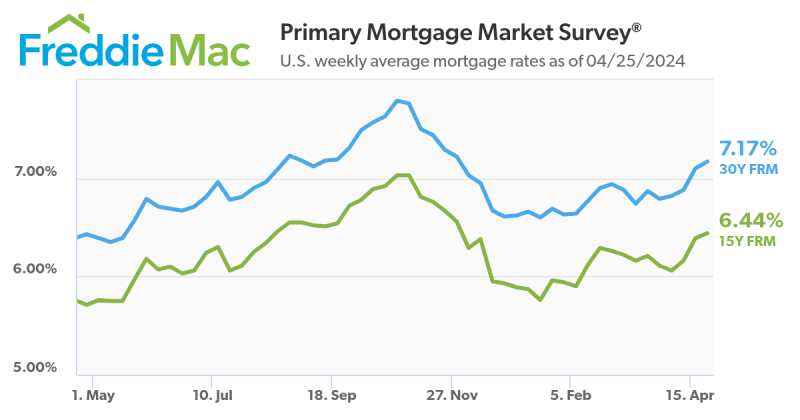Advertisement
Mortgages as investment planning tools
Can the FHA bounce back?Charlie W. Elliott Jr., MAI, SRAsub-prime, HUD, legislation
While still reeling from the sub-prime meltdown, those prime
decision-makers in the sub-prime market are, no doubt, considering
where to go from here. They may very well be thinking about how
that branch of the lending industry-tree became so laden with
problems that it collapsed under its own weight. They may also be
thinking about the timing of the meltdown, and why things are so
different today than in the past. Could the problem be one of
self-discipline or the lack thereof? Could the roots of their
problem have been akin to that of Enron, where the corporate
culture reeked to high heaven, from top management on down, with
little consideration for the future and with an eye only for a
quick buck?
It is impossible to accurately lay the blame for the demise of
the sub-prime industry, as we have come to know it, squarely at the
feet of those individuals or companies responsible. It is much too
large of a problem, involving an entire industry, political
pressures at the highest levels and a large socio-economic stratum
of the population.
As to its timing, this may be easier to address. For decades,
the federal government has, in one way or another, offered programs
designed to help low- to middle-income people who were unable to
qualify for prime loans, purchase homes. One of the most popular of
these programs is the Federal Housing
Administration (FHA) loan. Most of you who follow this sort of
thing will know that the FHA program has fallen out of favor with
borrowers in recent years. The number of FHA loans has declined,
while the number of loans overall has increased. There are numerous
reasons for this, and I will attempt to list a few of what I
consider the most important below.
-FHA loan-to-value ratios are 97 percent and not 100 percent or
125 percent, as we have seen in other segments of the mortgage
market.
-While there may be conflicting opinions on this, there is no
doubt in my mind that FHA loans are made to a stricter regulatory
standard than that of sub-prime loans. This has allowed
fast-and-loose wheeling and dealing among sub-prime lenders, which
has seemed more attractive to many borrowers.
-At this writing, the FHA loan maximum has been capped at what
many would consider too low a level. Even in the most expensive
markets such as California and New York, the maximum FHA loan
available is $239,250, and it is much less in other parts of the
country. This is less than the median housing prices in many
markets. Consequently, borrowers have been seeking higher loan
amounts, which were available in the sub-prime market.
-FHA does not offer alternative financing, such as that of
interest-only loans or balloon loans, which are offered by many
lenders. While many borrowers have opted for these unique loans,
they come with their risks, and this product is what has gotten
many borrowers in trouble.
U.S. Department of Housing and Urban Development Secretary
Alphonso Jackson is urging bankers, lenders and counselors to lobby
Congress to pass a bill aimed at offering homebuyers an alternative
to sub-prime loans. "FHA reform could be one important answer to
our sub-prime problems," Jackson said. "I ask you to help us to ask
Congress to expand our authority."
There was legislation that passed a House committee recently,
making it easier for low- and middle-income borrowers to get a
mortgage from the FHA. One provision would make it possible for
buyers to obtain 100 percent loans, thereby eliminating the
requirement for a down payment.
Some legislators and regulators are discussing ways that
sub-prime borrowers, already in danger of losing their homes, may
obtain FHA loans. The sub-prime market has eroded the FHA market in
recent years, and those at the FHA would like to recoup some of
this market.
Lately, the FHA has made some changes to make it easier to get
an FHA loan. Among them is the elimination of the requirement that
FHA appraisers complete the valuation conditions sheet on each
appraisal prepared for a FHA loan. This form required the appraiser
to answer many questions about the condition of the property over
and above that of a typical appraisal. This was done, in my
opinion, because appraisers did not like the extra work and the
extra liability that it represents. In some cases, lenders could
not find appraisers willing to do the work or, if they did, the
fees were much higher than those for standard appraisals. By
eliminating this requirement, the FHA product became a bit more
competitive.
In summary, FHA loans have in the past been the sub-prime market
in the United States. Recently, FHA has lost market share to the
many mortgage brokers and banks in favor of competing alternative
products, such as no-money-down and interest-only loans. The FHA
loan was the most conservative of the options to the borrowers.
Consequently, the FHA did not lose money on its loans, but it has
made fewer of them due to the fierce competition. Its competition
was made up, in large part, by sub-prime mortgage companies, as
well as some banks and other financial institutions making more
aggressive and riskier loans. Recently, with refinancing becoming
harder to get and interest-only loans ballooning, people in these
alternative loans found themselves trapped. In addition to these
problems, many borrowers found that the market to sell their homes
was softer than it had been in the past. All this came together to
form a sort of perfect storm, causing many foreclosures and the
sub-prime lenders began running for the hills.
This is a perfect opportunity for the FHA, which has been on the
sidelines keeping its powder dry. Watch for the FHA loan to become
one of the products of choice for sub-prime loans going forward.
This represents an opportunity for most lenders to serve this very
large market and to do it with relatively low risk. It also offers
vender-service providers, such as appraisal companies, with new
opportunities to expand into new venues not experienced to any
great degree lately.
Yes, the FHA loan is a product whose time has come. Patience has
paid off and much of the competition has left the arena, licking
its wounds. Timing is everything, and it is time for the FHA to
step in and take over the lions share of the sub-prime loan
market.
Charlie W. Elliott Jr., MAI, SRA is president of Elliott & Company
Appraisers, a national real estate appraisal company. He can be
reached at (800) 854-5889, [email protected] or
through the company's Web site at www.appraisalsanywhere.com.
Previous columns he has written for The Mortgage Press can
be seen on the Elliott & Company Appraisers Web site.
About the author





